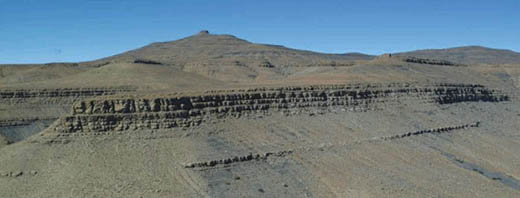LOBE 2
LOBE 1 Project

-
1. Database of quantitative information on lobe elements, lobes, and lobe complexes from selected proximal to distal to pinchout, and axial to marginal positions. This includes: length: width ratios tied to palaeoflow, amalgamation length: width ratios tied to palaeoflow, down dip and along strike facies changes at bed and bed-set scale, distribution and type of flow barriers (linked debrites and siltstones), and volumes of lobe elements and lobes
2. Results of the process-based numerical forward modelling, with quantification of controlling factor combinations that could reasonably have produced the measured geometries, grain size range, etc. Autogenic lobe formation based on conceptual models developed from outcrop
3. Ph.D. thesis by Amandine Prelat a CD-based interactive document
4. A final report as a CD-based interactive document, supplemented by large-scale hard copy diagrams and photomontages, including lobe hierarchy, gross depositional environment maps, evidence of compensational stacking at all scales, the full range of bed thickness trends in lobes, and lobe geometry
5. BAV1b – a 530m-long full cored research borehole from the Laingsburg depocentre through Units A and B. This is a Wilcox Group scale succession of lobes, and a facies and facies association atlas, with downhole recognition criteria for identification of lobes and lobe complexes, is being produced. A full set of professional core photographs is also tied to this deliverable, and correlation panels tying the well to local outcrops
6. Initial quantitative comparison study of modern and recent lobes from different settings, with discussion on similarities and differences of lobe dimensions

